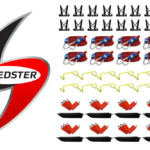When a coach joins a program, it signifies a cultural shift. In high school sports, where standards and expectations run high, alignment with the school’s culture is crucial. Coach onboarding shouldn’t be about just policies and procedures — it should be about ensuring each new hire understands the school’s culture.
It’s easy to focus hiring efforts on resumes, win-loss records, certifications, playing experience. But success is driven by more than credentials, it involves a certain passion and dedication towards high school athletics. Does the coach understand school values? Do they know how to connect with student-athletes? Are they prepared to uphold and elevate the school’s brand? These questions shape every decision of the onboarding process.
Establishing a foundation for culture
Every program has an existing identity — a history of success, a standard of accountability, an attitude of composure. An effective onboarding process immerses new hires with these expectations and offers practical guidelines for how to facilitate them. By clarifying coach expectations early, there’s a better chance that they will fit the role.
Establishing a formal or informal support system — another coach to answer questions or regular AD check-ups — ensures new hires are prepared when challenges emerge. A solid support network is particularly critical in programs where community visibility, media coverage, and internal pressure can overwhelm even seasoned professionals.
Translating philosophy into practice
It’s an athletic director’s responsibility to ensure coaches are able to translate program philosophy into real-time practice. During onboarding, teach Coaches how discipline is enforced, how success is measured, and how communication flows between athletes, parents, and administrators. Establishing a consistent operational standard eliminates ambiguity.
It’s also important that coaches have avenues to witness how others tackle challenges. Video analysis and in-game shadowing opportunities are excellent resources for coaches to decode not just the X’s and O’s, but how other coaches manage a locker room, conduct practice, and hold players accountable. These small observations accelerate cultural immersion and position coaches for early-on success.
Retention starts with intention
Hiring the right person is only the beginning. Supporting coaches over time requires deliberate investment. When new hires feel isolated, they’re more likely to make mistakes, misread culture, or even exit in frustration. Frequent touchpoints, even if informal, create trust and reduce stress.
Preparing coaches for scrutiny from booster clubs, parents, athletes, and the broader school community starts with honest communication. Set the tone early of what excellence looks like and what will help meet that bar. When coaches know what’s expected and that they won’t be left behind, they are well-equipped to lead the program to further success.










